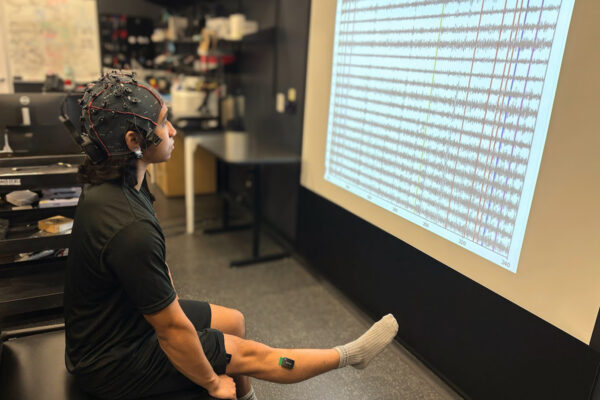As Congress considers $715 billion in cuts to Medicaid over the next decade, a new resource from Washington University in St. Louis is helping ground the national debate in facts.
Launched earlier this year, the Medicaid Policy Analysis Lab has begun releasing a series of timely policy briefs showing how policy decisions hit home — especially in Missouri, where Medicaid enrollment is among the highest in the nation. The lab is housed in WashU’s Center for Advancing Health Services, Policy & Economics Research (CAHSPER).
Congress is seeking to pass sweeping budget and tax legislation before Memorial Day.
“Our goal is to contribute facts and data that support informed decision-making,” said Timothy D. McBride, the Bernard Becker Professor at the School of Public Health and co-director of CAHSPER.
Missouri Medicaid trends
Among the lab’s first releases are three briefs exploring Missouri-specific trends:
- Rural-urban disparities: Rural Missourians are significantly more likely to rely on Medicaid than their urban counterparts — 23.8% compared to 15.8% — yet face a higher uninsured rate (9.5% vs. 6.8%).
- Employment status: Nearly two-thirds of Missourians on Medicaid between the ages of 19 and 64 are employed. Those who are not working often report major barriers such as illness, disability, caregiving responsibilities, school enrollment or retirement.
- Disability shifts: Some people who might have qualified for disability benefits instead enrolled through Missouri’s Medicaid expansion program. This shift helped save the state money, as Medicaid expansion spending receives a higher federal matching rate than other Medicaid spending.
CAHSPER also maintains a Missouri Medicaid Enrollment Dashboard, a public tool that visualizes enrollment data by region, county and managed care organization. The dashboard tracks enrollment trends in real time and has become a go-to source for policymakers and journalists.
U.S. Sen. Josh Hawley, R-Mo., cited the dashboard in a May 12 New York Times opinion piece titled “Don’t Cut Medicaid.” Hawley noted that roughly 21% of Missouri’s population is now enrolled in Medicaid — a figure derived from CAHSPER’s publicly available tracking tool. Views of the WashU Medicaid dashboard surged by 300% after Hawley cited its data in the opinion piece, jumping from an average of 70 views per day to more than 1,400 over five days.
“It is good to see our work being cited as a factual source for information like this,” said McBride, who served as the center’s director when the dashboard was developed. He also served as the principal investigator on the grant that funded the dashboard and the lab’s recent policy briefs.
McBride co-leads the Medicaid Policy Analysis Lab with Abigail Barker, a research associate professor at the School of Public Health, who developed the dashboard and maintains it.
“Missouri Medicaid has a long history of transparency in terms of publishing detailed data on all facets of enrollment, but that information is relatively inaccessible as tables within monthly PDF reports,” Barker said. “We wanted to bring that information to life visually, in an accessible format that can easily be understood by stakeholders — and that allows for quick reference of key information such as the statistic cited by Senator Hawley.”
A broader mission
CAHSPER co-director Karen Joynt Maddox, MD, an associate professor of medicine at WashU Medicine and of public health, works with McBride to help guide the center’s broader mission: bridging the gap between research and policy by producing applied, data-driven insights that shape real-world decisions and improve public health.
As debates around Medicaid and health insurance intensify, the center’s work is regularly cited in state and national media for its clear, accessible analysis. CAHSPER’s tools and briefs make clear what proposed changes could mean beyond the bottom line.



